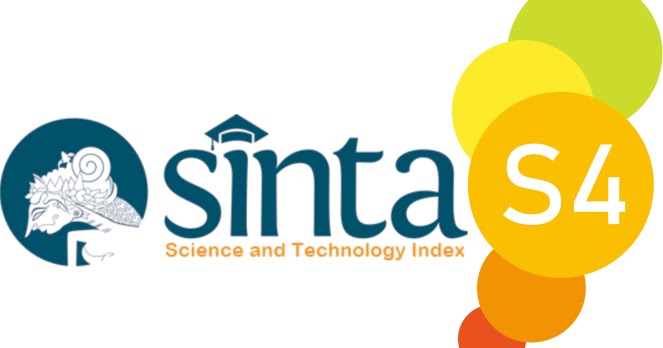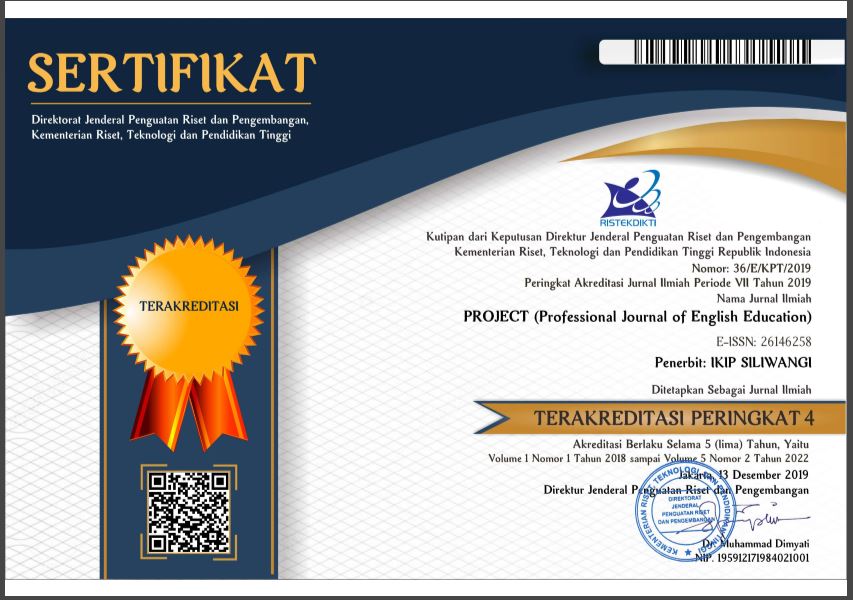EFL STUDENTS’ ENGAGEMENT IN MULTIMODAL LITERACY THROUGH DIGITAL STORYTELLING
DOI:
https://doi.org/10.22460/project.v6i3.p430-435Abstract
Although many previous studies have examined student or multimodal engagement through digital storytelling. there is still a lack of studies on student engagement in multimodal literacy through digital storytelling. To fill this gap, this case study investigates the involvement of English as a Foreign Language (EFL) students in multimodal literacy through digital storytelling (DST). Taking data from interviews with three junior high school students, it was found that students participated and interacted with other people and the teacher during the activities. In addition, students get motivation in learning English through digital storytelling. Finally, students showed their enjoyment and interest in making digital storytelling activities.
Â
Keywords:Â Student Engagement; Multimodal literacy; Digital Storytelling
References
Abidin, Y. (2022). Pengaruh Pembelajaran Berbasis Multimodal Terhadap Kemampuan Literasi Membaca Siswa Sekolah Dasar. Jurnal Cakrawala Pendidikan, 8(1), 103–116. https://ejournal.unma.ac.id/index.php/cp/article/view/1920/1213
Andayani, R. (2019). Engaging English student teachers in a digital storytelling project for young learners. IOP Conference Series: Earth and Environmental Science, 243(1). https://doi.org/10.1088/1755-1315/243/1/012066
Churchill, N. (2020). Development of students’ digital literacy skills through digital storytelling with mobile devices. Educational Media International, 57(3), 271–284. https://doi.org/10.1080/09523987.2020.1833680
Damayanti, I. L., & Febrianti, Y. (2020). Multimodal literacy: Unfolding reading path in children’s picture book and its potential for EFL classrooms. Indonesian Journal of Applied Linguistics, 9(3), 616–627. https://doi.org/10.17509/ijal.v9i3.23212
Frenkel, W. (2009). How to Design Research in Education and Evaluate (Vol. 59).
Garcia, P., & Rossiter, M. (2010). Digital Storytelling as Narrative Pedagogy. Society for Information Technology & Teacher Education International Conference, 1091–1097. http://www.editlib.org/p/33500/
Hines, S. (2014). Multimodal Literacy and Why It Matters: A Brief Overview. Against the Grain, 26(4). https://doi.org/10.7771/2380-176x.6902
Kallinikou, E., & Nicolaidou, I. (2019). Digital storytelling to enhance adults’ speaking skills in learning foreign languages: A case study. Multimodal Technologies and Interaction, 3(3). https://doi.org/10.3390/mti3030059
Kress, G. (2010). Multimodality A social semiotic approach to contentporary communication. In Routledge.
Lim, F. V. (2013). Multimodal Literacy. January 2013, 104–114. https://doi.org/10.4018/978-1-5225-7365-4.ch009
Nair, V., & Md Yunus, M. (2022). Using Digital Storytelling to Improve Pupils’ Speaking Skills in the Age of COVID 19. Sustainability (Switzerland), 14(15). https://doi.org/10.3390/su14159215
Robin, B. R. (2008). Digital storytelling: A powerful technology tool for the 21st century classroom. Theory into Practice, 47(3), 220–228. https://doi.org/10.1080/00405840802153916
Sari, D. P. (2022). Students’ Multimodal Literacy In Literature In Elt Subject At English Education Study Program of Sriwijaya University (Issue July).
Shinas, V. H., & Wen, H. (2022). Preparing teacher candidates to implement digital storytelling. Computers and Education Open, 3, 100079. https://doi.org/10.1016/j.caeo.2022.100079
Smeda, N., Dakich, E., & Sharda, N. (2014). The effectiveness of digital storytelling in the classrooms: a comprehensive study. Smart Learning Environments, 1(1). https://doi.org/10.1186/s40561-014-0006-3
Yoon, T. (2014). Developing multimodal digital literacy: the application of digital storytelling as a new avenue for effective English learning with EFL elementary school students in …. August, 1–214. https://scholarworks.umass.edu/dissertations_2/132/




